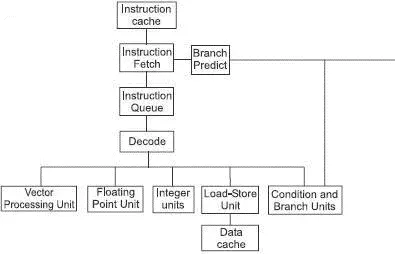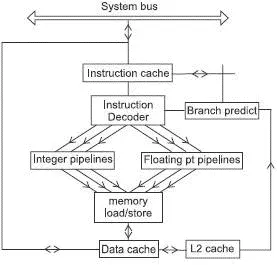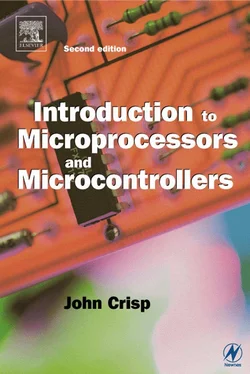John Crisp - Introduction to Microprocessors and Microcontrollers
Здесь есть возможность читать онлайн «John Crisp - Introduction to Microprocessors and Microcontrollers» весь текст электронной книги совершенно бесплатно (целиком полную версию без сокращений). В некоторых случаях можно слушать аудио, скачать через торрент в формате fb2 и присутствует краткое содержание. Год выпуска: 2004, ISBN: 2004, Издательство: Elsevier, Жанр: Компьютерное железо, на английском языке. Описание произведения, (предисловие) а так же отзывы посетителей доступны на портале библиотеки ЛибКат.
- Название:Introduction to Microprocessors and Microcontrollers
- Автор:
- Издательство:Elsevier
- Жанр:
- Год:2004
- ISBN:0-7506-5989-0
- Рейтинг книги:3 / 5. Голосов: 1
-
Избранное:Добавить в избранное
- Отзывы:
-
Ваша оценка:
- 60
- 1
- 2
- 3
- 4
- 5
Introduction to Microprocessors and Microcontrollers: краткое содержание, описание и аннотация
Предлагаем к чтению аннотацию, описание, краткое содержание или предисловие (зависит от того, что написал сам автор книги «Introduction to Microprocessors and Microcontrollers»). Если вы не нашли необходимую информацию о книге — напишите в комментариях, мы постараемся отыскать её.
Introduction to Microprocessors and Microcontrollers — читать онлайн бесплатно полную книгу (весь текст) целиком
Ниже представлен текст книги, разбитый по страницам. Система сохранения места последней прочитанной страницы, позволяет с удобством читать онлайн бесплатно книгу «Introduction to Microprocessors and Microcontrollers», без необходимости каждый раз заново искать на чём Вы остановились. Поставьте закладку, и сможете в любой момент перейти на страницу, на которой закончили чтение.
Интервал:
Закладка:

Figure 13.5 The PowerPC 970
The IOPs are executed in whatever order that will result in the fastest throughput and to reduce the complexity of keeping track of the execution of each and every one, they are organized in groups of five and then the groups are tracked.
Of the final row shown, there are the arithmetically based block that handle the vectors, floating point and integer calculations, the load-store that handles the transfer of data to the memory via the second level cache and finally the feedback path for the branch prediction information.
The PowerPC may not be in our PC but it may well be in our car. The Ford Motor Company has elected to use the PowerPC as first choice for their engine management computer into the next century.
In each case, choose the best option.
1 The maximum number of instructions that the PowerPC 970 can be dealing simultaneously is:
(a) 200.
(b) 3.
(c) 16384.
(d) 128.
2 Write-back:
(a) reverses the order of the bits of data.
(b) is used to double-check the accuracy of data before use.
(c) is only used in the little-endian system.
(d) stores results in the cache rather than in the external memory.
3 The PowerPC 970 has an internal bus running at a frequency of:
(a) 64 bits/s although it can run at 32 bits/s.
(b) 512 kB/s.
(c) 900 MHz.
(d) 533 MHz.
4 A register that can be accessed by two circuits at the same time is referred to as:
(a) a second-level cache.
(b) dual-ported.
(c) a buffer.
(d) a three-ported device.
5 Big endian format:
(a) stores the low byte in the highest address.
(b) stores the high byte in the highest address.
(c) is used in all microprocessors.
(d) is used in a cache but never in the main memory.
14. The Athlon XP
This is AMD’s competitor to the Pentium and is concentrating the mind of both companys and greatly benefiting the rest of us.
Competition concentrates the mind as well as improving things for the customers.
AMD has been creeping up on Intel for several years and finally the Athlon’s 37 million transistors are giving the Pentium a serious problem. It is usually cheaper and, in many tests, faster. The thought behind the Athlon is not to compete in terms of clock speed but to go for real speed by doing more work for each clock cycle. Even so, the Athlon XP is now competing head-to-head on speed, having matched the Pentium at 2.8 GHz using the same 0.13 micron technology though with a different internal design and ensuring (of course) that the two microprocessors are not pin-for-pin compatible. The Athlon includes a similar system of protection against thermal overload as in the Pentium.
An outline of the Athlon XP is shown in Figure 14.1.

Figure 14.1 The Athlon XP processor
Caches
For maximum speed the caches are on-chip. This eliminates the traveltime delay as the data is moved.
From the external memory and the surrounding hardware, the incoming information from the system bus is fed into a 64 kB instruction cache and a separate 64 kB data cache. The data cache feeds data into the L2 cache, which is somewhat larger at 256 kB and has techniques to ensure that the L2 cache does not duplicate any of the information stored in the data cache and hence we effectively have a 384 kB local high speed storage area.
Branch predict
As with all current microprocessors, great care is taken to guess the likely result in each branch instruction. Such instructions produce, usually, two alternative routes for the program. They answer questions like ‘is the result zero?’ and the answer will determine what happens next. If we always wait until the question is answered and only then do we load the instructions for the next bit of the program there is much wasted time as we saw in the earlier microprocessor designs. If we guess correctly, we can already pre-load the next part of the program and get started on it. The branch prediction circuitry does the guessing. If it gets it wrong, the old data is ditched and replaced.
Hardware data prefetch
This is a further form of prediction similar in which the incoming instructions are monitored and, as they are still arriving, the data that will be needed is guessed at, and loaded into the data cache so the Athlon loads data before it knows that it will be needed. As with the branch prediction, incorrect data has to be overwritten but on balance, it speeds up the data flow.
Instruction decoders
To make full use of its slower clock speed, the Athlon has three instruction decoders that can run independently. Each of these can handle three operations per clock cycle giving an overall throughput of nine operations per clock cycle, which is still significantly greater than the six operations per clock cycle of the Pentium.
Pipelines and instructions
The Athlon has three independent integer pipelines and also three similar floating-point pipelines whereas the Pentium has four pipelines for integers but only two for floating points. The three floating-point execution units simultaneously handle:
(a) store and load functions
(b) add functions
(c) multiply functions such as all the Intel MMX (multimedia extensions) instructions plus AMCs own SIMD (single instruction multiple data) instructions to provide full support SSE (streaming SIMD extension) and more lifelike 3D imaging and graphics – AMD’s name for these new instructions is ‘3D NOW!’ technology. (MMX is an Intel trademark; 3D NOW! is an AMD trademark.)
The state of the competition
The Pentium had a ‘rapid execution engine’ which had two ALUs (arithmetic and logic units) for the integer instructions, each clocked at twice the core processor speed running a front side bus at 533 MHz whereas the Athlon XP had only a 333 MHz FSB. This continues the pattern of the Pentium claiming the headline figure for speed. However, on balance, the Athlon is, by most tests, slightly faster than the Pentium.
An update…
That was written yesterday. This morning came the news that Intel has burst through the 3 GHz barrier (just) with a 3.06 GHz device. This, they say, includes hyper-threading, a technique that involves splitting a program into units that can be ran simultaneously. It allows the micro to run multiple applications at the same time, with the processor appearing to be two processors. Such multitasking is available in Windows XP and Linux and probably all their successors. So where does this leave the future, are we going to go for greater and greater speeds, or will we develop multi-tasking so we effectively have greater and greater numbers of micros sharing the work? I have a feeling that task sharing will be the answer.
It seems likely that Intel is now back out in front.
Exciting times ahead…
Another update…
Almost immediately, Athlon has replied with what appears to be another significant step forward – 64-bit computing.
The microprocessor which as yet has been living with the codename ‘Hammer’ will be sold as the more user-friendly name of ‘AMD Athlon 64’ and will be available in mid-2003 and will join the PowerPC 970 in the ‘64’ club. It will be able to run 64-bit, 32-bit and 16-bit applications without any speed penalty and so avoid the cost of buying new software.
Читать дальшеИнтервал:
Закладка:
Похожие книги на «Introduction to Microprocessors and Microcontrollers»
Представляем Вашему вниманию похожие книги на «Introduction to Microprocessors and Microcontrollers» списком для выбора. Мы отобрали схожую по названию и смыслу литературу в надежде предоставить читателям больше вариантов отыскать новые, интересные, ещё непрочитанные произведения.
Обсуждение, отзывы о книге «Introduction to Microprocessors and Microcontrollers» и просто собственные мнения читателей. Оставьте ваши комментарии, напишите, что Вы думаете о произведении, его смысле или главных героях. Укажите что конкретно понравилось, а что нет, и почему Вы так считаете.












